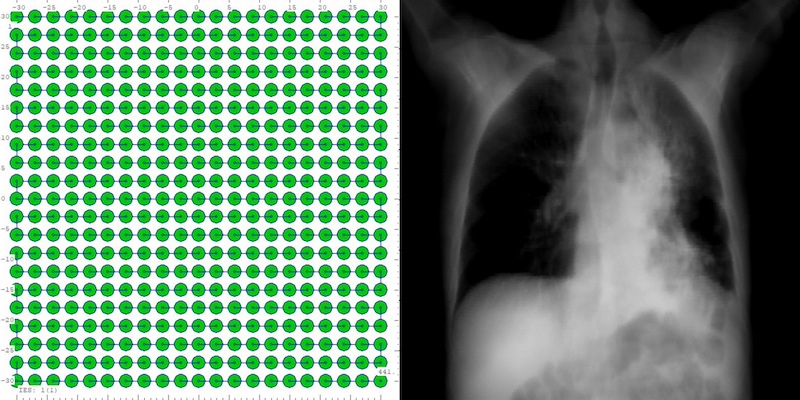Motion-induced artifacts in spot-scanning ion radiography
- chair:Medical Imaging for Modeling and Simulation
- type:Master thesis
- tutor:
Spot-scanning particle (ion) radiography is an experimental imaging modality closely related to proton and ion radiotherapy [1]. It provides highly accurate tissue density mapping free of range uncertainty, thereby improving the accuracy of dose delivery. Recent studies [2] have demonstrated its potential benefits for treating moving targets, such as prostate and lung cancer, where precise imaging is critical for effective ion beam therapy.
However, motion during image acquisition, primarily caused by patient breathing, introduces artifacts that degrade image quality. These artifacts can obscure anatomical structures, potentially leading to misinterpretation and inaccuracies in treatment planning and delivery. Addressing motion-induced artifacts is therefore critical to maximizing the precision and clinical effectiveness of proton and ion beam therapy.
In this project, the student will develop site-specific imaging protocols using patient 4DCT data and a simulation framework complemented by experimental phantom data. The goal is to explore and optimize methods for motion-resolved ion radiography.
This work supports the advancement of ion radiography by enabling imaging of complex, moving anatomical structures with clinically available ion beams - bringing this promising technique closer to routine clinical application.
Tasks
• Environment setup
• Ion radiographs simulation based on the patient 3D and 4DCTs
• Experimental data processing and image reconstruction
• Development of an algorithm to determine the optimal beam delivery pattern
• Comparison of results and writing of a scientific paperRequirements
• Basic programming skills
• Analytical skills
[1] Pryanichnikov AA et al. Phys Med. 2025; 133:104959. doi: 10.1016/j.ejmp.2025.104959.
[2] Hardt JJ et al. Phys Med Biol. 2024; 69(12). doi: 10.1088/1361-6560/ad46db

